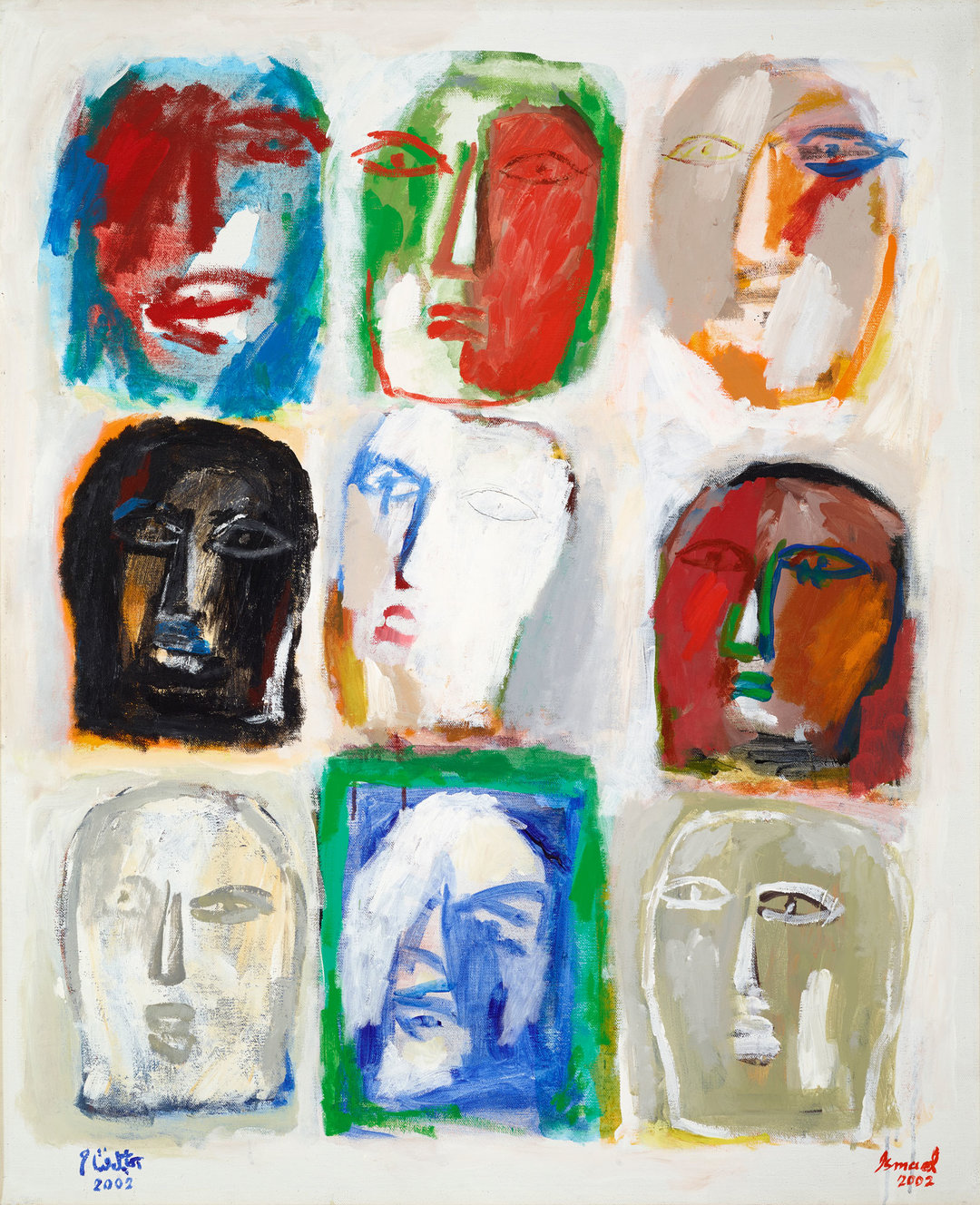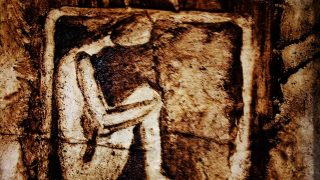Egypt has filled its prisons with some 40,000 people since the 2013 coup, the vast majority of them young activists of the now-banned Muslim Brotherhood subjected to torture and mistreatment. And so once again, writes Ismail al-Iskandarani, the country is turning out a new generation of violent radicals. In this illuminating history of the links between the country’s prisons and violent extremism, he lays bare the complex history of the Sinai based ISIS affiliate that weeks ago blew up an airliner full of Russian tourists, murdering more than 200 people.
Extremist Islamic theology has a vocabulary and 20th century history all its own, as al-Iskandarani writes here. Jihad encompasses a broad range of religious struggle, depending on the context. Salafis are Sunni Muslims who symbolically reject modernity and try to emulate medieval customs. Takfiris are extremists who believe that nearly all of their fellow Muslims are actually unbelievers who must repent or die.
The present wave of arrests and mistreatment of detainees in today’s Egypt is nothing new for the country’s Islamists. Indeed it might be said that takfiri thought itself [a violent form of Salafi Islamism]was born in Egyptian prisons in the 1960s under the blows of extreme torture, years when state repression against the Muslim Brothers and anyone remotely suspected of being affiliated with them was widespread.
One of the main torture centers of that period, the ‘military prison’ in East Cairo which has since been demolished, happened to be located near the site of the Rabaa al-Adawiyya square massacre [where security forces killed about a thousand people demonstrating in support of the recently overthrown president Mohamed Morsi].
The psychological pressure exerted on the detainees in the torture centers by Egyptian authorities in those years was so extreme that it led them to believe that only apostates could so humiliate fellow Muslims. What then are the implications of this for our present and our future?
Two important shifts occurred during this period. The first was a deep and long lasting change in the writings of Sayyid Qutb, a man of letters and a onetime supporter of the July 1952 revolution [which brought Nasser and the military to power]. In prison, Qutb’s writings soon moved from a radical but non-violent stance and into extremist takfiri theory: declaring the whole of society apostate, describing it as plagued by obscurantism, and calling on ‘true believers’ to cut their emotional ties to what he called a non-Islamic society.
In a prison hospital following his first arrest in 1954, Qutb began re-interpreting Quranic verses for his magnum opus, In the Shade of the Quran [Fi Zilal al-Quran]. His final work, Milestones [Ma’alim fi al-Tariq] remains a reference for jihadis all over the world, half a century after he was executed in the summer of 1966.
The second shift, of a more limited duration but even more extreme in thought in practice, had a profound effect on Islamic movements in the second half of the twentieth century. In the prisons of the 1960s Shukri Mustafa rose to the leadership of a group calling itself Jamaat al-Muslimiin; the media referred to it as Jamaat al-Takfir wal-Hijra [The Excommunication and Emigration Group]. Shukri replaced the group’s founder, Sheikh Ali Ismail, who later repudiated its ideology.
Ismail had established the group in reaction to the execution of his brother, Abdel Fatah Ismail, who was among the men who were hanged along with Qutb. Ismail ended up renouncing “al-Takfir wa al-Hijra” after reconsidering his impulsive embrace of the “takfir” philosophy upon which the group was founded.
His successor Shukri Mustafa, on the other hand, was young and had hadn’t had much luck trying to understand Islamic jurisprudence. The brutal experience of prison had however prepared him well to lead what became after his release an extremely radical and violent underground organization.
Mustafa was soon involved in the assassinations of renowned Islamic figures, including the former Minister of Islamic Endowments, Mohamed al-Dhahabi. Mustafa was eventually captured and executed in 1978. But as it turned out, his Takfir wal-Hijra left a deep mark on the history of jihadi movements; reinforcing the belief among takfiri radicals that they must withdraw completely from contemporary society. [Mustafa and his disciples had established a bleak little ‘Islamic state’ in the mountains near Assyut.] From Qutb’s ideas, they had held onto little of the theoretical framework save the bare ideas of takfir and isolation; indeed their thought had become so insular that they had dismissed even the major imams [scholars]of classical Islamic jurisprudence as kuffar [apostates].
Egypt’s rulers eventually came to understand the connection between prison torture and the rise of Qutbism and takfiri movements. But this did not lead them to develop new rules and policies for dealing with Islamists inside the prisons. It is true that [in the 1990s]the state launched a dialogue process with imprisoned jihadi leaders, which resulted in the renunciation of violence by groups like Al-Jihad and The Islamic Group[Al-Gamaa Al-Islamiyya]. Mistreatment of prisoners continued however; the path to the radicalization of Shukri Mustafa of the Takfir wal Hijra group was reproduced in the contemporary experiences of Khaled Musaed. The one-time dentist founded the Sinai based militant group Al-Tawhid wal Jihad, the nucleus of the jihadi insurgent group Ansar Beit al-Maqdis, which more recently swore allegiance to DAESH [ISIS], becoming its ‘Sinai Province.’
In the 1980s and 90s, the Sinai peninsula was free of Islamist jihadis, unlike Egypt’s Nile Valley provinces, most of which were witnessing clashes between security forces and terrorist militants belonging to the al-Jihad organization and the Gamaa Islamiyya. In Sinai by contrast, the word jihad connoted official militant resistance to the neighboring [and until recently occupying]state of Israel. Guerilla fighters from Sinai had cooperated with Egyptian military intelligence to gather information and conduct military operations against Israel during Israel’s occupation of the peninsula. The Sinai fighters were known as “Sinai Mujahideen”. Later, “Sinai Mujahideen” became an NGO for veterans of the conflict, officially registered under the Egyptian Ministry of Social Solidarity. Most of the Sinai fighters belonged to the Shadhili (Darqawiyya Alawiyya) Sufi order. Apart from Sinai’s Sufi veterans, there was hardly any strong presence for Islamist “movements” in the peninsula. The Muslim Brotherhood had an insignificant presence in the peninsula and some Salafi ideas (particularly those of the Alexandria-based Salafi Da‘wa) made their way to the peninsula through natives of Sinai who had gone away to work or study in the Nile Valley.
But in the mid-1990s, two officers from Egypt’s State Security Investigations Service [Amn Ad-Dawla], (called Homeland Security nowadays) were re-posted from Upper Egypt to the northern Sinai. They replicated the methods used against militants in Upper Egypt [focus of a very violent Islamist insurrection at the time]on suspects in Sinai. In Upper Egypt, where terrorist groups had no public sympathy, broad public support for state agents had provided a certain amount of cover for the security services’ bestial methods against Islamist militants. But the situation was very different in Sinai, where there were no terrorist attacks before 2004. Nevertheless the new state security officers initiated a policy of large-scale arrests of Sinai residents suspected of belonging to terrorist organizations. The officers have intentionally increased the suffering of the detainees and their families by sending them far away to remote prisons across Egypt. The prisoners were also constantly moved from one prison to the other. The outcome of this policy was that Sinai’s novice Salafi youth, were given a first-rate education in the most radical ideas of Salafi militants they met in prison. Khaled Musaeb’s story is a case in point. This young dentist of Beduin orgins, well-known for his calm and gentle demeanor, and for his hard work in one of the charity organziations of the city of al-Arish, left prison armed with the most fanatical terrorist convictions, going on to found the nucleus of is now the ‘Sinai province’ of the Islamic State.
He established “al-Tawhid wa al-Jihad” with two of his friends in the period between 2000 and 2003. Their reference was the jihadi manual, al-‘Umda fi I’dad al-‘Udda (The Essentials of Getting Ready [for Jihad]). The manual is authored by Sayyid Imam al-Sherif, [an Egyptian born high-ranking member in Al-Qaeda]. Musaed’s organization was responsible for the first ever terrorist attacks in Sinai’s contemporary history. They targeted resorts that are known to be frequented by Israeli tourists. They timed the operations to coincide with Egyptian national celebrations: The 6 October war, the July 1952 revolution, and the Sinai liberation day. They used car bombs and IEDs to attack important tourist locations in South Sinai: Taba and Nuweiba in 2004, Sharm El-Sheikh in 2005 and Dahab in 2006. The attacks left more than 130 dead (including Egyptians and foreigners), and more than 300 injured.
Musaed and two of his organization’s leaders were killed in Northern Sinai in August 2005 in the midst of armed clashes with the police. The security forces’ iron fist had by then temporarily succeeded in curbing the threat of this Sinai-based terrorist organization, whose members had dispersed. Some went to live in rural hideouts in Northern Sinai’s border villages and others escaped to neighboring Gaza through the underground tunnels. They have, however, mostly stayed close to their families, particularly residing in and around Palestinian Rafah in the Gaza strip, which became the stronghold for takfiri Jihadis.
In 2009, the tension between the Hamas government in Gaza and the Rafah-based takfiris led by [Palestinian extremist preacher] Abdel Latif Mousa intensified. Mousa and a number of his followers were killed inside the Ibn Taymiya mosque near the border with Egypt. From that point on, takfiris began escaping in a reverse flow into Northern Sinai. And even as Egyptian authorities began to believe they had completely wiped out the threat of armed ideological militants in Sinai, “Ansar Beit al-Maqdis” was forming out of the remnants of “al-Tawhid wa al-Jihad.” (The group had briefly called itself “al-Qaeda wa al-Jihad”) The new organization would benefit significantly from the individual combat and security expertise its members had gained across the border during Israel’s Gaza war of 2008-2009.
In the summer of 2010, “Ansar Beit al-Maqdis” undertook its first operation and bombed the Egyptian pipeline that carried gas to Jordan and Israel. The group announced its responsibility for that attack when it publicly revealed its existence in 2012, a year after Egypt’s 2011 revolution.
In contrast to the two debacles discussed up to this point [takfiri jihadism in the prisons of the 1960s and in the contemporary Sinai], the method of interaction [by the Egyptian state]with the imprisoned leadership of the Al-Jihad group and the Gamaa al-Islamiyya in the 1990s was a relative success.
By the end of the 1970s, after Shukri Mustafa’s takfiri organization was dismantled, al-Jihad and Gamaa Islamiyya joined forces. They focused their attacks on the institutions of the state, without deeming the entirety of society unbelievers [as Mustafa’s group had]. The climax of their cooperation was their successful infiltration of army and military intelligence ranks, which led to the assassination of former president Anwar El Sadat in the 1981, in the midst of a military parade celebrating the October War victory.
Those two organizations were not nearly as fragile as “al-Takfir wa al-Hijra”. Their terrorist operations continued steadily throughout the 1980s and early 1990s. Hundreds of their members were killed and hundreds imprisoned, but in the end, defeat only came thanks to wide public support for the state’s campaign against them. The police force alone was responsible for this campaign, after the military had repeatedly refused to partake in local security affairs.
The public had however turned a blind eye to violations by security forces, which were at the same time savage but only committed in limited areas. The public seemed to view such actions as justifiable in order to achieve the goal. Even as this security campaign was being carried out, the imprisoned leadership of these groups were under immense psychological and ideological pressure to revise their theories. This was accompanied by a relative improvement in the conditions for those imprisoned [long term], at least relative to the way prisoners were treated in detention wards and interrogation centers. Naturally, divisions occurred among jihadis, as those rejecting ideological revisions accused those who accepted them of treachery. But the ideological revision project was successful overall, though it did not end with a complete reconciliation with the state. State security did not actually permit the release of those linked with “al-Jihad” and “al-Gam’a al-Islamiya”, even for years after they had completed their sentences.
The Supreme Council of the Armed Forces released those detainees following the January 25 revolution in 2011.
“Al-Gam’a al-Islamiya” had experienced a genuine prison conversion, remaining true to the ideological revisions its leaders had made and pledging itself to non-violence; the political party it established after the revolution, “Al-Bina’ Wal-Tanmiya” (Building and Development) was never implicated in any criminal acts, in spite of an alliance with the Muslim Brotherhood during the year the latter was in power. Nor were they implicated in the violence following the ousting of former president Mohamed Morsi from power in 2013.
Members of “al-Gam’a al-Islamiya” and the affiliated political party made sure to secure themselves against being targeted by security forces. The government of Abdel Fatah al-Sisi does not consider them a threat, in spite of the fact that he has is expanding the campaign of eradication against political Islamic movements. Things have gotten to the incredible point that important figures from Al-Jihad have metamorphosed into opinion writers and guest stars of the media that supports the regime. They play an outsized role in the public debates and discussions about other Islamists.
Translated by: International Boulevard







